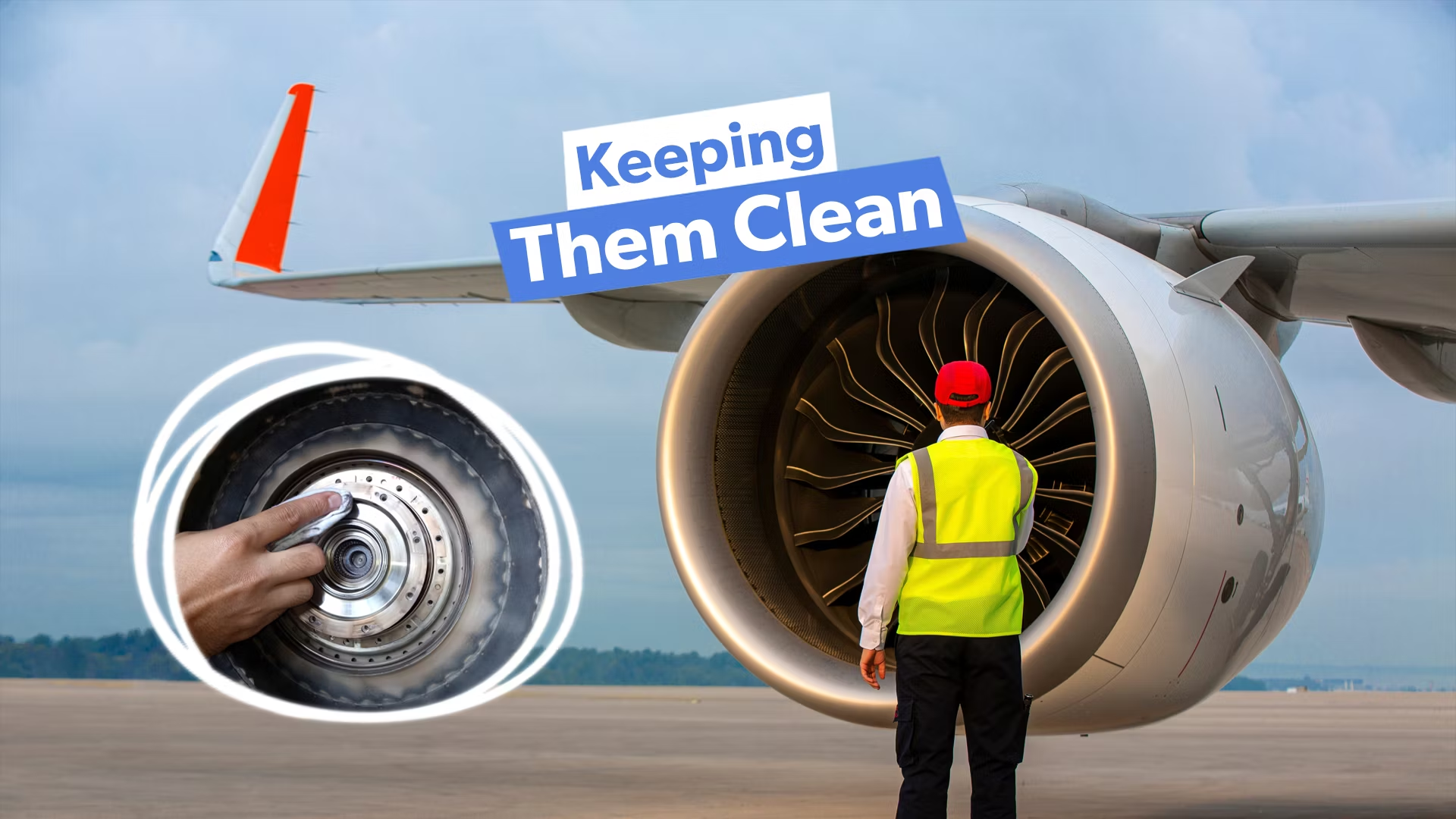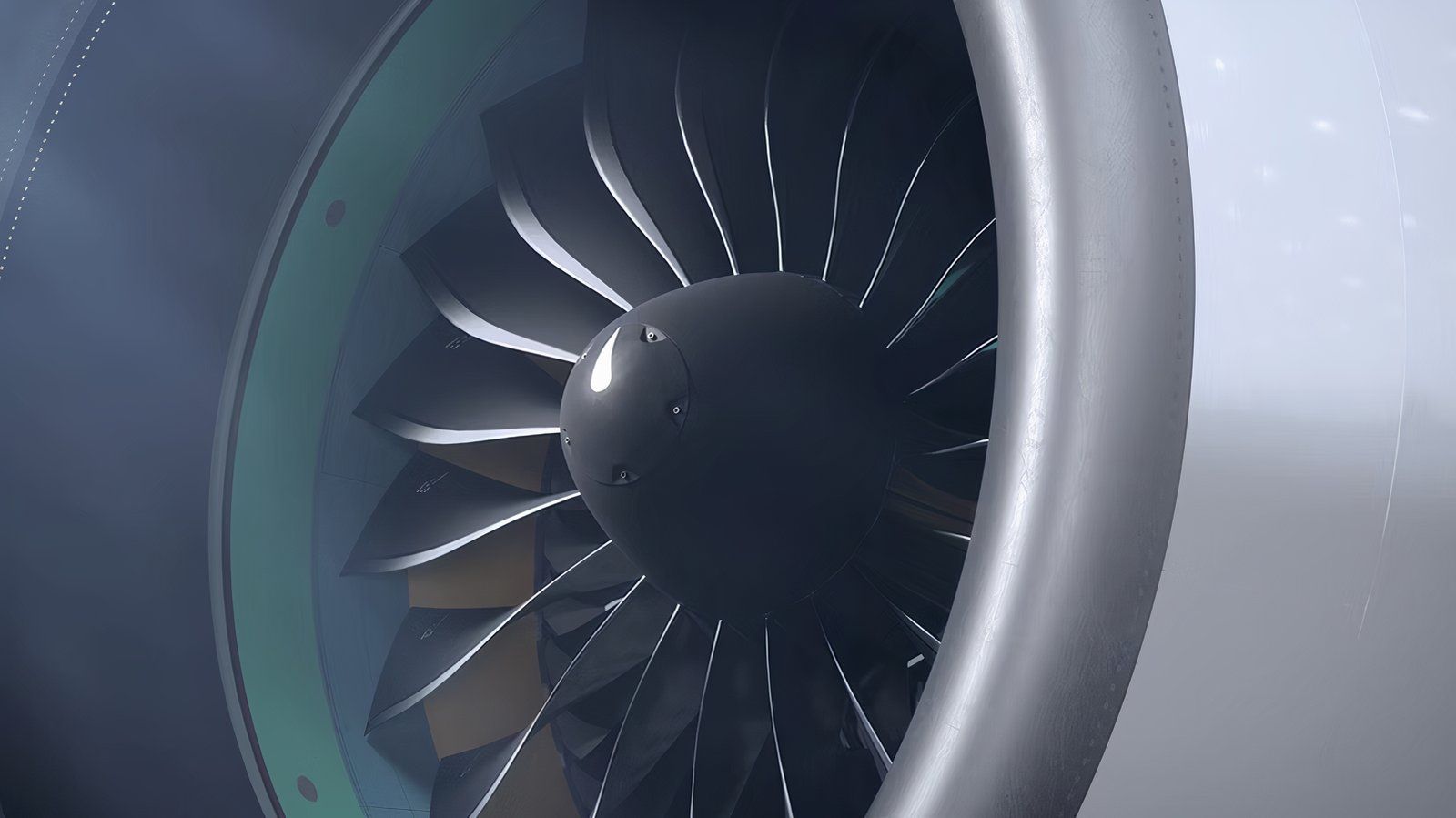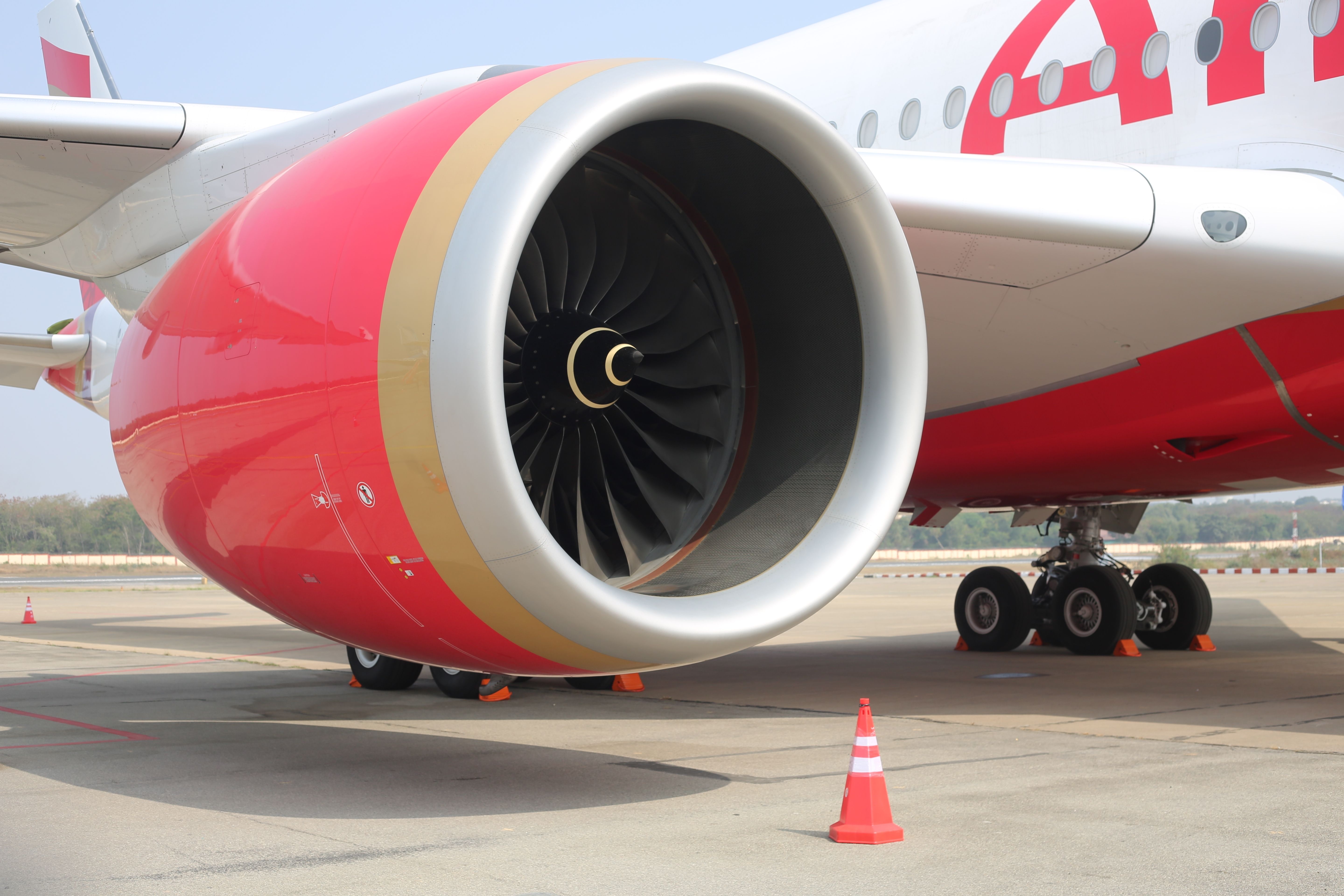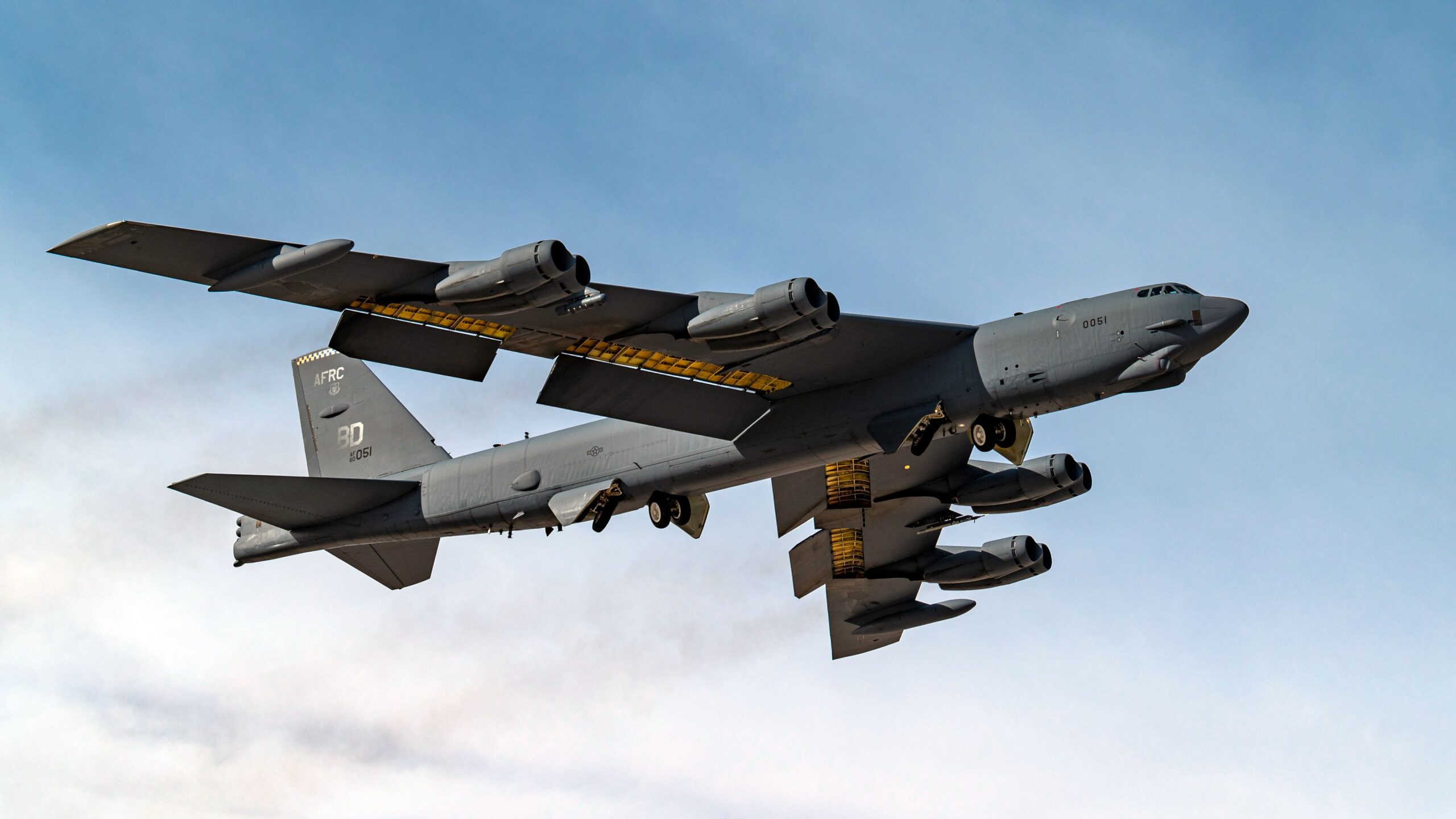Of the thousands of individual components that work together to allow a passenger airliner to safely fly from its origin airport to its destination, engines are undeniably the most important. Without functioning engines
that are reliable, safe, efficient, and clean, it is impossible to guarantee passenger and aircraft safety, which is of the utmost importance for any air travel operator.
The challenge with cleaning and maintaining aircraft engines is that they are incredibly specialized pieces of machinery, some of which have thousands of individual components, all of which must be in perfect condition for them to remain serviceable under American and European safety standards. With even the smallest imperfection, scratch, or dent, an airline engine can become fully inoperable and require an extended shop visit on account of US and EU civil air transport regulations, which are among the world’s most stringent.

Two kinds of engine cleaning
Airline engines undergo a thorough cleaning regularly, removing dirt or other waste to ensure that nothing interrupts their use. Engines are also rigorously examined before flights, with any sign of a defect immediately calling for the attention of mechanics and other maintenance personnel.
Photo: Pratt & Whitney
However, more periodically, engines will require more than just the standard maintenance and cleaning procedures that happen throughout a powerplant’s lifespan. This is called an overhaul and will require the engine to be fully reconstructed, and have all its components rigorously examined and tested before it is finally put back together and eventually into service. Let’s take a deeper look at these complex and essential processes.
The cleaning process requires careful attention to be paid to the engine
While the principal objective of engine cleaning is to ensure the removal of all material that is inside the powerplant, no damage whatsoever must be done to the machine. The engine materials, for the most part, are resistant to fluids (such as the metal turbine blades), but there are sensitive electronics that must be approached with extreme caution.
Just three days ago, the European Union Aviation Safety Agency (EASA), the continent’s air safety watchdog, concluded that an inappropriate cleaning process was partially responsible for an engine failure onboard a Cathay Pacific Airbus A350. This process resulted in damage to the primary fuel hose which provided the engine’s primary connection to the wing-mounted fuel tanks.
With this in mind, it is important to remember that cleaning an engine will often involve pumping water into the engine’s turbine and spinning it washing machine-style until water comes out of the back of the engine. Special detergents will often be used to prevent damage to electronics, according to an earlier analysis of the matter published by Simple Flying.
In some extreme cases, manufacturers have even recommended the use of naturally occurring exfoliant substances, like peanut shells, to remove particulate buildups. The Aircraft Owners and Pilots Association (AOPA) recommends that all electronic components be fully protected before an engine cleaning and also encourages post-cleaning component lubrication.
Photo: Aerospace Trek | Shutterstock
Regardless of the method, engine cleaning is a relatively routine process and is necessary to ensure that these powerplants continue to function at maximum efficiency. Many industry experts have noted that the engine-cleaning process often results in a significant and notable improvement in engine performance.
An engine overhaul is a completely different beast
Despite being cleaned, extensive use can lead engine components to become slowly damaged over time, which can come as a result of corrosion, excessive exposure to the elements, or any number of other factors. As a result, almost all major aerospace regulatory agencies mandate that engines receive a complete overhaul after a given number of flight cycles.
For narrowbody aircraft, engines will need to be overhauled on somewhat of a regular basis, as they are started up far more often than their widebody counterparts, some of which can go nearly a decade without an overhaul. This comes as narrowbody engines encounter far more flight cycles than those on widebodies, which may only be used for a flight a day.
Whatever the engine, the process of overhauling is not simple and can be extremely time-consuming. Often, airlines will remove an engine fully from the airframe and replace it with another, allowing the plane to remain in service while the engine undergoes a complete overhaul. The following three steps will then occur:
- The engine will be completely taken apart, with every single component detached.
- These components will then be rigorously inspected, with any defective components fixed or replaced.
- Then the engine will be completely pieced back together again.
As one would expect, this process takes an extended amount of time, often requiring an engine to be unserviceable for weeks at a time. As a result, airlines will often have far more engines than are fitted onto the planes at any given time, and maintain massive facilities for overhaul operation. Recently, CNBC was able to take a look inside American Airlines’ overhaul facility in Tulsa, Oklahoma, where hundreds of engines have been overhauled over the past few years alone.
So what’s the bottom line with engine overhauls?
With aircraft being kept in service for longer periods of time, carriers are investing more and more in engine maintenance and overhaul resources. Aircraft like the Boeing 757 and Boeing 767 have been in service for decades, and their engines have undergone many successive overhauls. With every overhaul, more and more components of an aircraft engine are defective, making it more and more expensive to continue the process.





